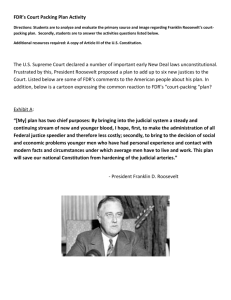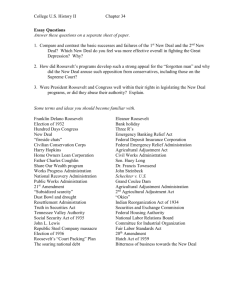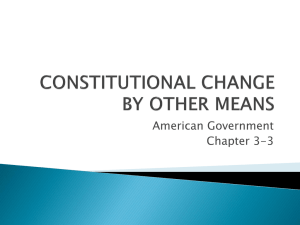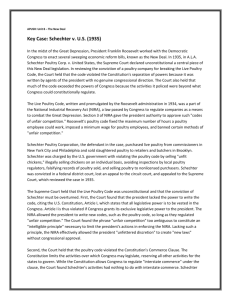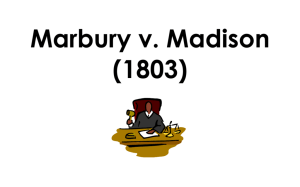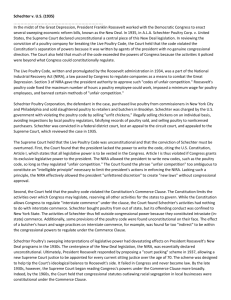Schechter Poultry Corporation v. United States (1935)
advertisement
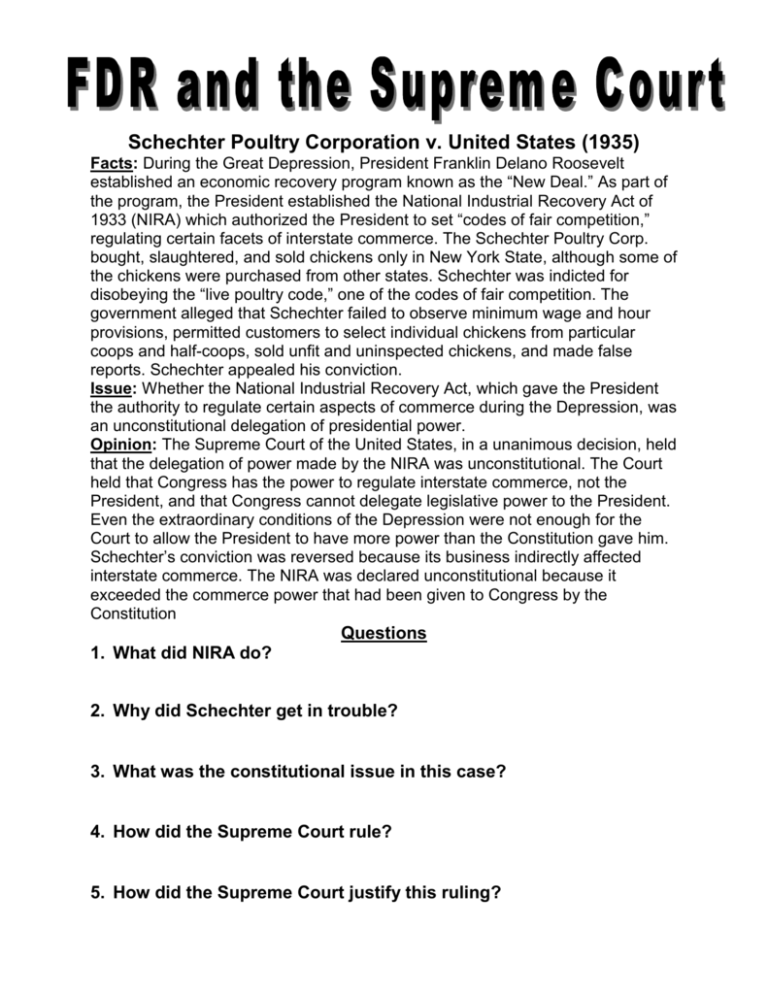
Schechter Poultry Corporation v. United States (1935) Facts: During the Great Depression, President Franklin Delano Roosevelt established an economic recovery program known as the “New Deal.” As part of the program, the President established the National Industrial Recovery Act of 1933 (NIRA) which authorized the President to set “codes of fair competition,” regulating certain facets of interstate commerce. The Schechter Poultry Corp. bought, slaughtered, and sold chickens only in New York State, although some of the chickens were purchased from other states. Schechter was indicted for disobeying the “live poultry code,” one of the codes of fair competition. The government alleged that Schechter failed to observe minimum wage and hour provisions, permitted customers to select individual chickens from particular coops and half-coops, sold unfit and uninspected chickens, and made false reports. Schechter appealed his conviction. Issue: Whether the National Industrial Recovery Act, which gave the President the authority to regulate certain aspects of commerce during the Depression, was an unconstitutional delegation of presidential power. Opinion: The Supreme Court of the United States, in a unanimous decision, held that the delegation of power made by the NIRA was unconstitutional. The Court held that Congress has the power to regulate interstate commerce, not the President, and that Congress cannot delegate legislative power to the President. Even the extraordinary conditions of the Depression were not enough for the Court to allow the President to have more power than the Constitution gave him. Schechter’s conviction was reversed because its business indirectly affected interstate commerce. The NIRA was declared unconstitutional because it exceeded the commerce power that had been given to Congress by the Constitution Questions 1. What did NIRA do? 2. Why did Schechter get in trouble? 3. What was the constitutional issue in this case? 4. How did the Supreme Court rule? 5. How did the Supreme Court justify this ruling? Franklin D. Roosevelt on “Court-Packing” Toward the end of Franklin D. Roosevelt’s first administration, the Supreme Court began to declare important new Deal legislation unconstitutional. In 1937 Roosevelt introduced legislation designed to change the makeup of the Court. Roosevelt’s proposal would empower the president to appoint a new member whenever an incumbent justice, who had been acting as a judge for at least ten years, failed to retire at the age of seventy; most conservatives on the Supreme Court were already over seventy. The maximum number of justice3s would be set at fifteen, six more than the court consisted of. Here is part of the President’s explanation of this bill. When I commenced to review the situation with the problem squarely before me, I came by a process of elimination to the conclusion that, short of amendments, the only method which was clearly constitutional, and would at the same time carry out other much needed reforms, was to infuse new blood into all our Courts. We must have men worthy and equipped to carry out impartial justice. But, at the same time, we must have Judges who will bring to the Courts a present-day sense of the Constitution - Judges who will retain in the Courts the judicial functions of a court, and reject the legislative powers which the courts have today assumed… What is my proposal? It is simply this: whenever a Judge or Justice of any Federal Court has reached the age of seventy and does not avail himself of the opportunity to retire on a pension, a new member shall be appointed by the President then in office, with the approval, as required by the Constitution, of the Senate of the United States. That plan has two chief purposes. By bringing into the judicial system a steady and continuing stream of new and younger blood, I hope, first, to make the administration of all Federal justice speedier and, therefore, less costly; secondly, to bring to the decision of social and economic problems younger men who have had personal experience and contact with modern facts and circumstances under which average men have to live and work. This plan will save our national Constitution from hardening of the judicial arteries. Franklin D. Roosevelt Fireside Chat, March 9, 1937 Questions 1. What does Roosevelt give here as his reasons for presenting this bill? 2. What do you think were his real reasons? 3. What flaws can you find in his arguments? 4. The president’s bill was referred to the Committee on the Judiciary. How do you think they responded to it? Court-Packing in Political Cartoons “Let’s Harmonize” 1. How is FDR treating Congress? 2. Why is FDR reaching toward the Supreme Court? 3. According to the cartoonist, which branch of government is trying to dominate? “Coronation is Over’ 1. What does the man carrying the crown symbolize? 2. How is Congress changing its behavior? 3. Why did Congress change its attitude toward the President?
